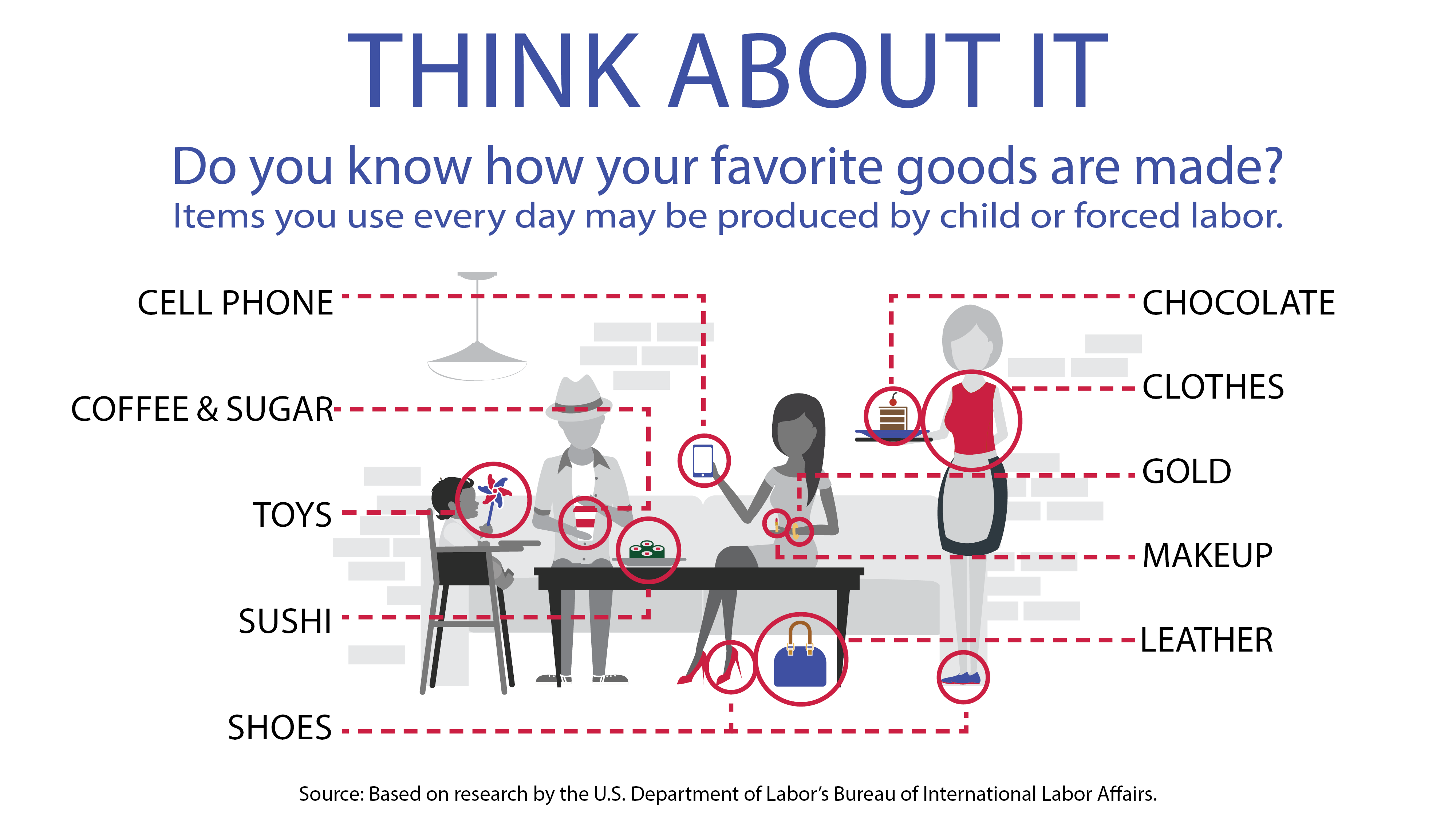ILAB as a Knowledge Generator
ILAB’s research and reporting are carried out under Congressional mandates and Presidential directives. They provide specific, actionable information to various stakeholders about how to combat labor abuses in countries around the world.
- Foreign governments use the reports to strengthen laws, enforcement, policies, and programs for vulnerable children and families in or at-risk of child labor or forced labor.
- Companies rely on these reports as a critical input for risk assessments, to conduct due diligence on their supply chains, and to develop strategies to address the problem.
- Consumers utilize our research to minimize the risk that their purchases inadvertently support exploitative labor practices around the world.
- Civil society organizations, including academic institutions, use the reports to inform advocacy efforts and to assist victims in accessing appropriate referral and/or grievance mechanisms and remedy.
- U.S. federal government agencies use the reports to safeguard federal procurement and guard against the importation of goods made with forced labor, including forced child labor.
Findings on the Worst Forms of Child Labor (TDA Report)
The TDA Report is prepared in accordance with the Trade and Development Act (TDA) of 2000. The TDA added the requirement that a country implement its commitments to eliminate the worst forms of child labor in order for the President to consider designating and retaining the country a beneficiary developing country under the Generalized System of Preferences (GSP) program. The TDA also mandates the President to submit to Congress the Secretary of Labor’s findings with respect to each “beneficiary country’s implementation of its international commitments to eliminate the worst forms of child labor.” ILAB carries out this responsibility on behalf of the Secretary on an annual basis by assessing the efforts of 132 GSP beneficiary countries and territories to eliminate the worst forms of child labor in the areas of laws and regulations, institutional mechanisms for coordinating and enforcement, and government policies and programs. This assessment is based on a progress scale that includes significant, moderate, minimal, or no advancement. The TDA Report also presents findings on the prevalence and sectoral distribution of the worst forms of child labor.
List of Goods Produced by Child Labor or Forced Labor (TVPRA List)
The TVPRA List is required by the Trafficking Victims Protection Reauthorization Act (TVPRA) of 2005. The Act directs ILAB to develop and publish the List and to “consult with other departments and agencies of the United States Government to reduce forced and child labor internationally and ensure that products made by forced labor and child labor in violation of international standards are not imported into the United States.” As of September 2018, the TVPRA List includes 148 goods from 76 countries and a total of 418 line items.
List of Products Produced by Forced or Indentured Child Labor (EO List)
Executive Order (EO) 13126, issued in 1999, requires DOL, in consultation with the Departments of State and Homeland Security, to publish and maintain a list of products, by country of origin, which the three Departments have a reasonable basis to believe might have been mined, produced, or manufactured by forced or indentured child labor. This List is intended to ensure that U.S. federal agencies do not procure goods made by forced or indentured child labor. Under procurement regulations, federal contractors who supply products on the List must certify that they have made a good faith effort to determine whether forced or indentured child labor was used to produce the items supplied and that, on the basis of those efforts, the contractor is unaware of any such use of child labor.
Other Research
ILAB also funds research projects that pilot new tools and methodologies that deepen our knowledge and understanding of child labor and forced labor, including their root causes. ILAB programming has supported:
- The collection and analysis of credible data on child labor, forced labor, and human trafficking through the implementation of over 90 national child labor surveys and 10 surveys focused on forced labor or forced child labor;
- The development of new survey methodologies, qualitative and quantitative studies, and statistical guidelines on child labor and forced labor; and
- The establishment of International Labor Organization global estimates on child labor and forced labor, which serve as the standard for measuring worldwide progress on these issues.


